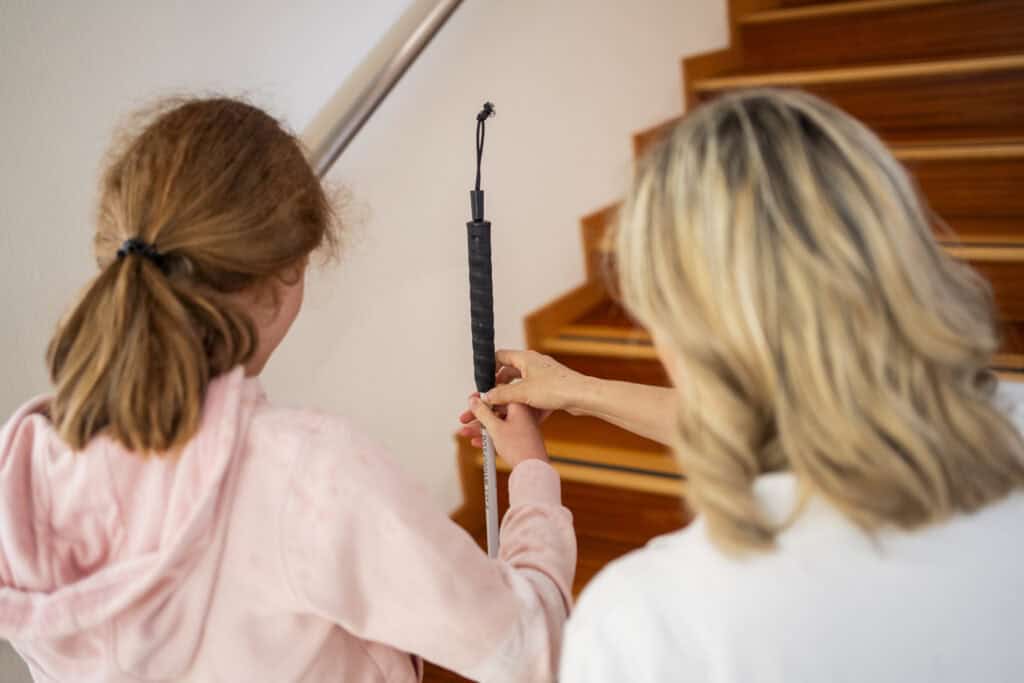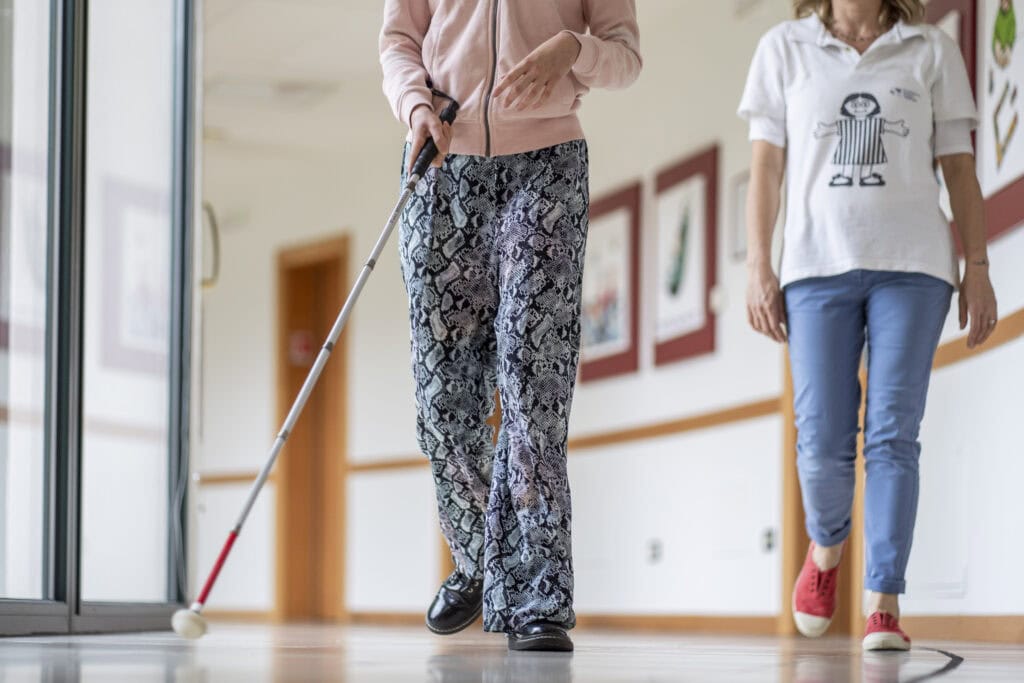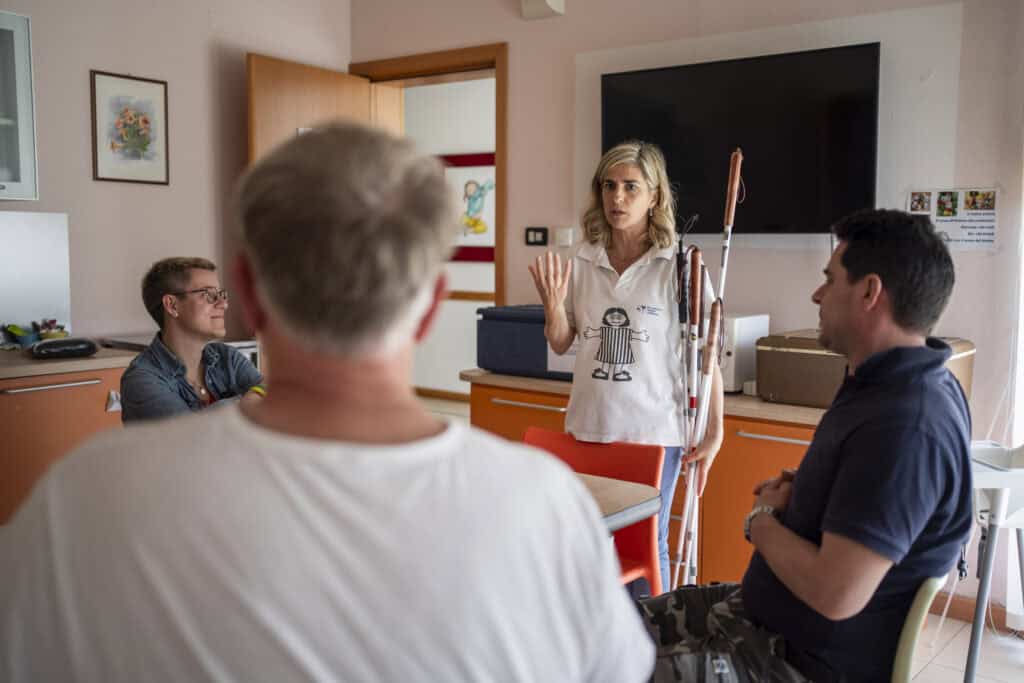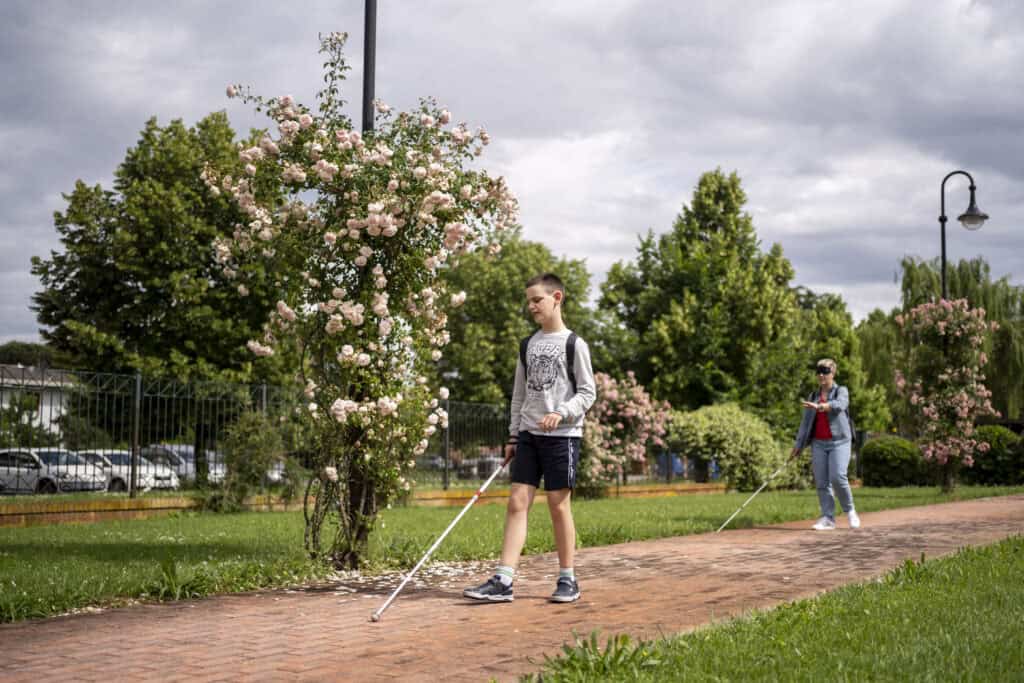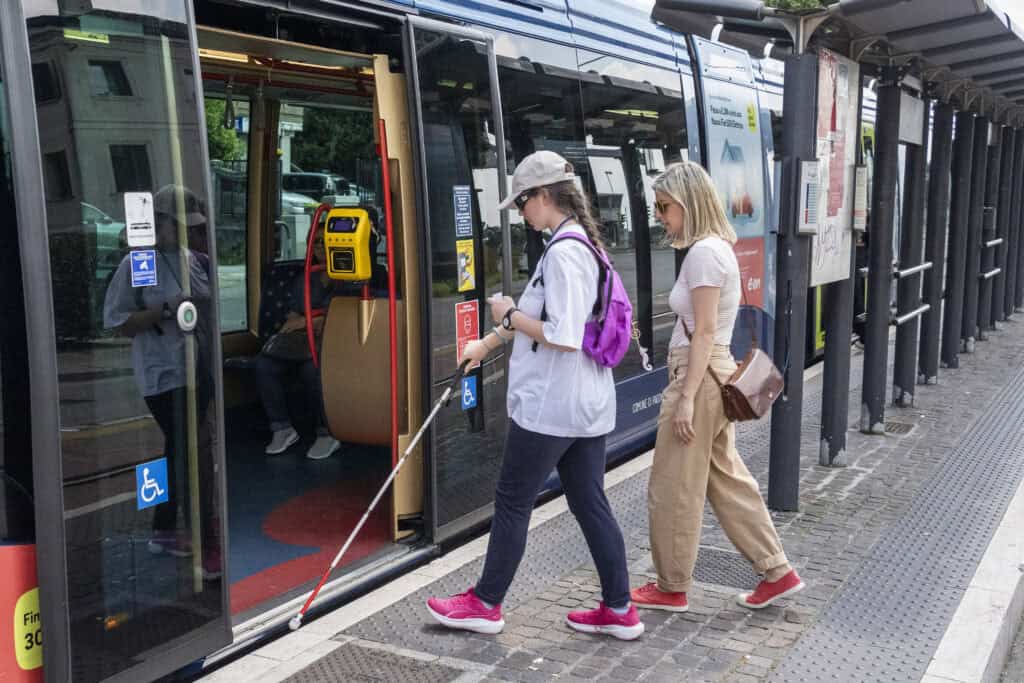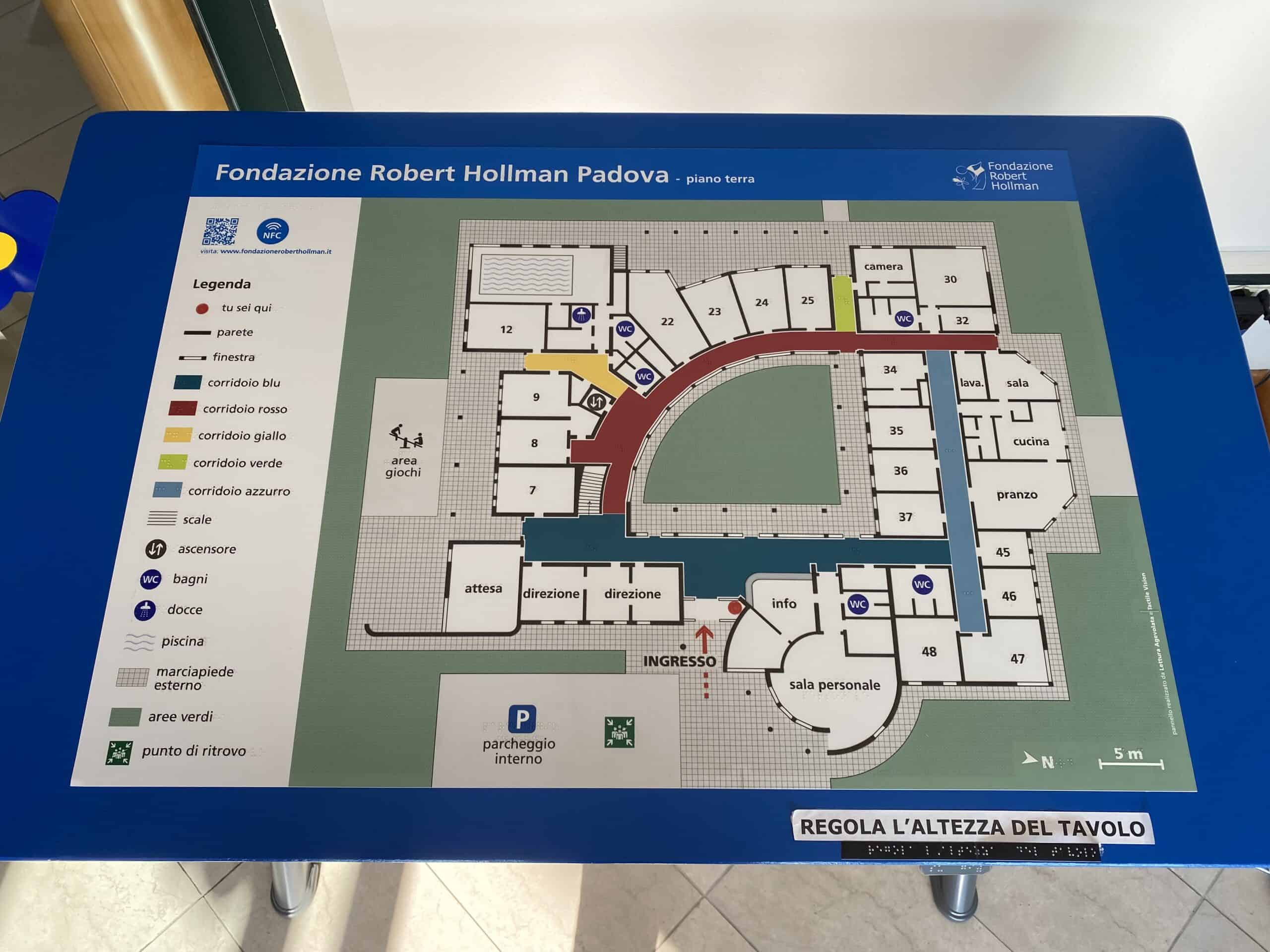Going to school, finding one’s way around familiar or unfamiliar places, reaching a room independently–these are just some of the actions that are part of a child’s daily routine along his or her personal developmental path.
Like everyone, therefore, a blind or visually impaired child encounters these rights-duties during the stages of his growth. However, in the absence of sight, it is much more strenuous for him to gain the freedom of autonomy spontaneously, without the need to be accompanied by others all the time, with the risk of compromising full self-fulfillment and quality of life.
The project, which led to the creation of the tactile map placed at the entrance of the Padua Center, developed from these reflections sparked by the Robert Hollman Foundation’s workers to promote the accessibility of the facility. In addition, another fundamental goal of the map is to support the orientation activities proposed to develop the independent mobility of children with visual impairment who attend, often from a very young age, the Center.
The map, designed to be intuitive and user-friendly by means of tactile lines, different textures and a legend with black and braille characters, was conceived in collaboration with the Lettura Agevolata association of Venice, which for decades has been involved in the development of inclusive communication and cultural heritage enhancement projects. In addition, it was made possible thanks to the contribution of Fiori Blu, an association created through the efforts of some parents of children with visual impairments who attend or have attended the Foundation in the past.
Thus, thanks to this special multisensory tool, children with visual impairment can also start from here to achieve their personal autonomy goals. Supported by the operators, they can explore with their hands the panel representing the various elements of the space (doors, walls, elevators, stairs…), and then go concretely to the discovery of the structure, with the possibility of acquiring some spatial reference points, which will help them to create in each of them a mental map. In this way, children are facilitated in moving with greater confidence and precision, orienting themselves along the corridors to reach the different indoor environments, but also those outside, such as the large green park and the accessible play area.
